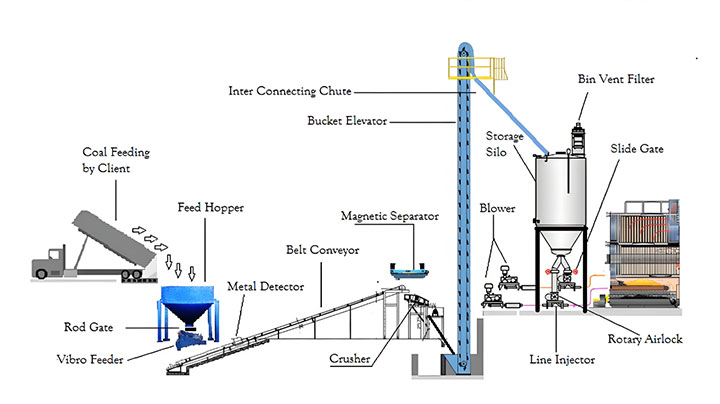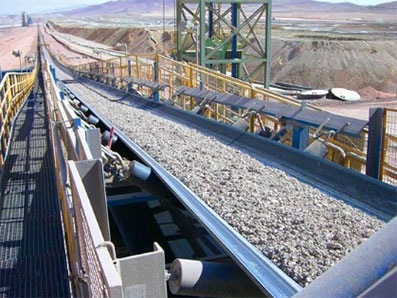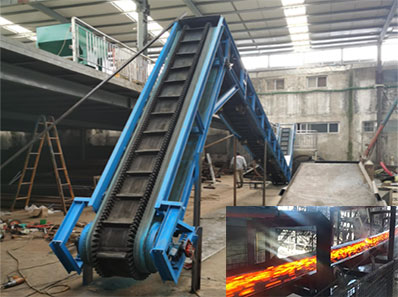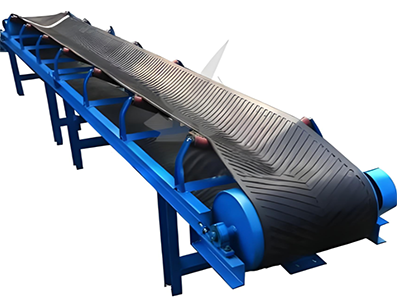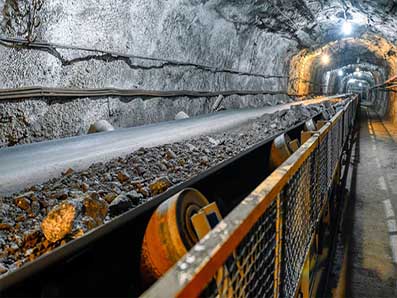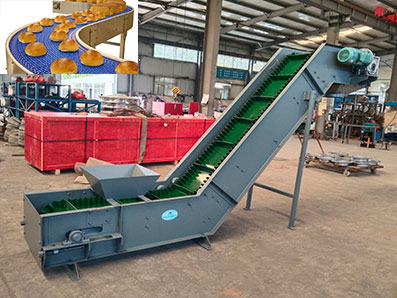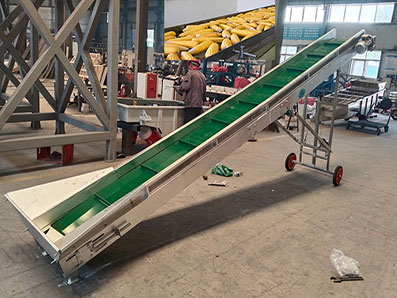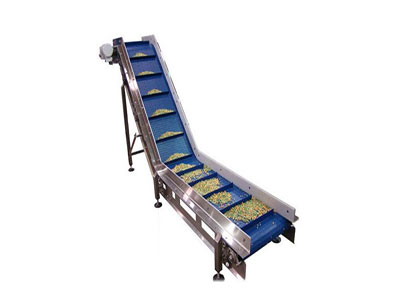
Bulk material conveyor
Bulk material conveyors utilize specialized load-bearing and traction components to efficiently transport various bulk materials from their origin to their destination.
Conveying distance: 10-100 meters
Conveying length: 12-102 meters
Conveying capacity: 50-1000 tons/hour
Applicable materials: Coal, ore, grain, sand and gravel
Material: Carbon steel Q235 / stainless steel 304
Bulk material conveyor is a kind of mechanical equipment used to continuously convey bulk materials such as sand, cement, coal, ore, etc. It is widely used in mining, chemical industry, building materials, grain and other industries.
About Bulk Material Conveyors
Bulk materials vary in density, particle size distribution, moisture content, viscosity, fluidity, and corrosive properties. Therefore, the material, width, and length of bulk material conveyors are tailored to the specific characteristics of the materials being screened. Anti-clogging features are available for wet, easily agglomerated materials, while enhanced wear resistance is provided for abrasive ores. Conveying capacity can be adjusted according to production needs, typically ranging from a few cubic meters to thousands of cubic meters per hour. Bulk material conveyors offer a wide range of conveying distances, from a few meters for bulk material transfer within a workshop to hundreds or even thousands of meters for long-distance material transport in large mines or factories. In terms of material selection, common carbon steel is suitable for non-corrosive, general-purpose materials, stainless steel is suitable for corrosion-resistant applications such as food and chemicals, and special alloys are suitable for harsh environments with high temperatures and high wear.
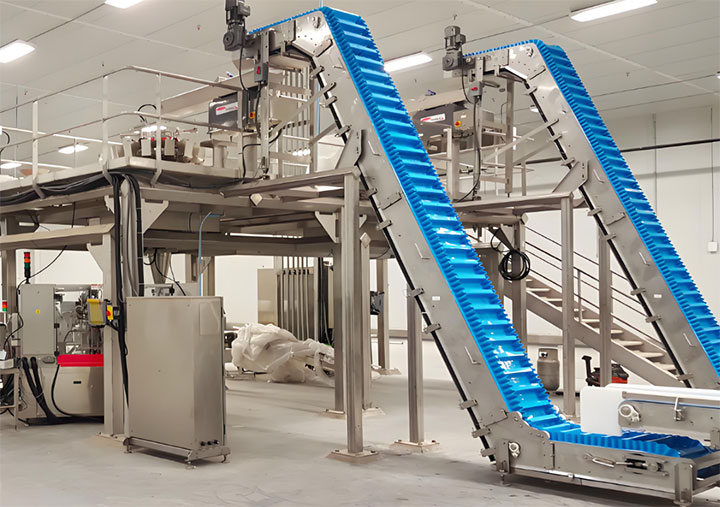
What are the advantages of bulk material conveyors?
Bulk material conveyors are highly versatile and can transport a wide range of bulk solid materials, from powders and granules to lumps, across a wide range of industries, including coal, ore, grain, and cement, meeting the needs of continuous, high-volume logistics. Their core advantages are high conveying capacity, long distances, low energy consumption, and simple structure. They enable continuous and uniform conveying of bulk materials, a high degree of automation, and easy operation and maintenance. Their enclosed design prevents dust and spillage, and tubular models offer flexible adaptation to complex terrain, reducing the number of transfer points. Bulk material conveyors can be selected based on whether the conveying path is straight, has curves, or requires multiple loading and unloading points, resulting in a choice of belt, chain, or screw conveyors.
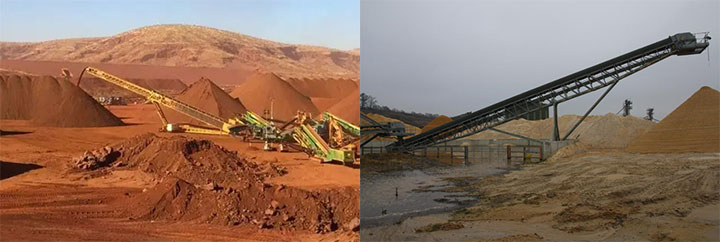
What are the specifications of bulk material conveyors?
| ST Rating | Recomm-ended Cord Dia (mm) | Pitch (mm) ±1.5 | Belt Width | Minimum Recommended Pulley Diameters (mm) for MAWT utilisation > 60% | |||||||||||||
| 800 | 900 | 1000 | 1050 | 1200 | 1400 | 1500 | 1600 | 1800 | 2000 | 2200 | 2400 | A | B | C | |||
| 500 | 2.6 | 12 | 64 | 71 | 81 | 84 | 97 | 114 | 122 | 131 | 147 | 164 | 181 | 197 | 500 | 400 | 315 |
| 560 | 2.7 | 12 | 64 | 71 | 81 | 84 | 97 | 114 | 122 | 131 | 147 | 164 | 181 | 197 | 500 | 400 | 315 |
| 630 | 2.9 | 12 | 64 | 71 | 81 | 84 | 97 | 114 | 122 | 131 | 147 | 164 | 181 | 197 | 500 | 400 | 315 |
| 710 | 3 | 12 | 64 | 71 | 81 | 84 | 97 | 114 | 122 | 131 | 147 | 164 | 181 | 197 | 630 | 500 | 400 |
| 800 | 3.1 | 12 | 64 | 71 | 81 | 84 | 97 | 114 | 122 | 131 | 147 | 164 | 181 | 197 | 630 | 500 | 400 |
| 900 | 3.3 | 12 | 64 | 71 | 81 | 84 | 97 | 114 | 122 | 131 | 147 | 164 | 181 | 197 | 800 | 630 | 500 |
| 1000 | 3.5 | 12 | 64 | 71 | 81 | 84 | 97 | 114 | 122 | 131 | 147 | 164 | 181 | 197 | 800 | 630 | 500 |
| 1120 | 3.7 | 12 | 64 | 71 | 81 | 84 | 97 | 114 | 122 | 131 | 147 | 164 | 181 | 164 | 800 | 630 | 500 |
| 1250 | 4.2 | 14 | 55 | 61 | 69 | 72 | 84 | 98 | 104 | 112 | 127 | 141 | 155 | 169 | 800 | 630 | 500 |
| 1400 | 4.5 | 14 | 55 | 61 | 69 | 72 | 84 | 98 | 104 | 112 | 127 | 141 | 155 | 169 | 800 | 630 | 500 |
| 1600 | 5 | 15 | 50 | 57 | 64 | 67 | 77 | 90 | 97 | 104 | 117 | 130 | 144 | 157 | 1000 | 800 | 630 |
| 1800 | 5.4 | 15 | 50 | 57 | 64 | 67 | 77 | 90 | 97 | 104 | 117 | 130 | 144 | 157 | 1000 | 800 | 630 |
| 2000 | 6 | 15 | 50 | 57 | 64 | 67 | 77 | 90 | 97 | 104 | 117 | 130 | 144 | 157 | 1000 | 800 | 630 |
| 2250 | 6.2 | 15 | 50 | 57 | 64 | 67 | 77 | 90 | 97 | 104 | 117 | 130 | 144 | 157 | 1000 | 800 | 630 |
| 2500 | 6.6 | 15 | 50 | 57 | 64 | 67 | 77 | 90 | 97 | 104 | 117 | 130 | 144 | 157 | 1250 | 1000 | 800 |
| 2800 | 7 | 15 | 50 | 57 | 64 | 67 | 77 | 90 | 97 | 104 | 117 | 130 | 144 | 157 | 1250 | 1000 | 800 |
| 3150 | 7.4 | 15 | 50 | 57 | 64 | 67 | 77 | 90 | 97 | 104 | 117 | 130 | 144 | 157 | 1250 | 1000 | 800 |
| 3550 | 8 | 15 | 50 | 57 | 64 | 67 | 77 | 90 | 97 | 104 | 117 | 130 | 144 | 157 | 1400 | 1250 | 1000 |
| 4000 | 8.6 | 15 | 50 | 57 | 64 | 67 | 77 | 90 | 97 | 104 | 117 | 130 | 144 | 157 | 1400 | 1250 | 1000 |
| 4500 | 9.2 | 16 | 46 | 52 | 59 | 65 | 71 | 84 | 90 | 96 | 109 | 121 | 134 | 146 | 1400 | 1250 | 1000 |
| 5000 | 10.4 | 17 | 43 | 48 | 55 | 60 | 66 | 78 | 84 | 90 | 102 | 113 | 125 | 137 | 1600 | 1250 | 1000 |
| 5400 | 11 | 17 | 43 | 48 | 55 | 60 | 66 | 78 | 84 | 90 | 102 | 113 | 125 | 137 | 1600 | 1250 | 1000 |
| 6300 | 11.6 | 17 | 43 | 48 | 55 | 60 | 66 | 78 | 84 | 90 | 102 | 113 | 125 | 137 | 2000 | 1800 | 1600 |
Bulk material conveyor types
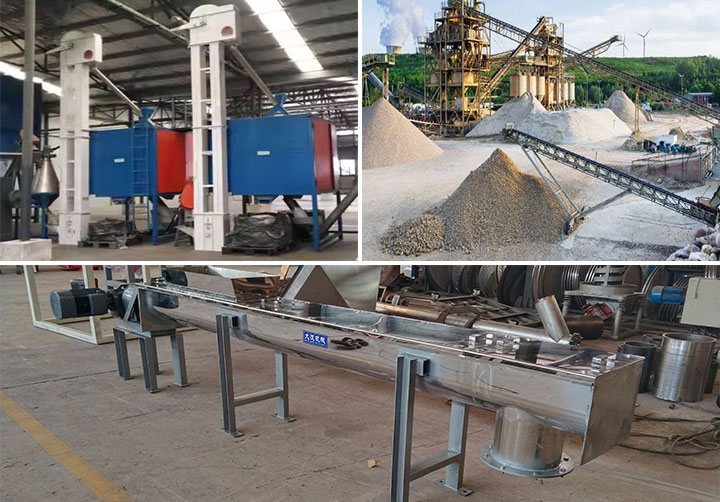
Based on their operating principles and structural features, bulk material conveyors can be divided into several types to suit different application scenarios. Belt conveyors have the highest conveying capacity, typically reaching thousands of tons per hour, and are suitable for long-distance, high-volume material transportation. Bucket elevators have a wider conveying capacity range, generally ranging from a few tons to hundreds of tons per hour, and are used for vertical or inclined lifting of bulk materials. Screw conveyors have relatively smaller conveying capacities, typically ranging from a few cubic meters to hundreds of cubic meters per hour, and are particularly suitable for conveying powdered or granular materials.
How much does a bulk material conveyor cost?
Conventional bulk material conveyors have conveying lengths of 10-30 meters and conveying capacities of 50-200 cubic meters per hour, costing approximately $8,000-15,000. Large scraper conveyors or bucket elevators, suitable for mines and large factories, have conveying capacities exceeding 200 cubic meters per hour and are more expensive, typically ranging from $20,000-50,000. Custom designs, the use of specialized materials (such as stainless steel or wear-resistant alloys), or the addition of automated control systems can increase the price depending on specific needs.
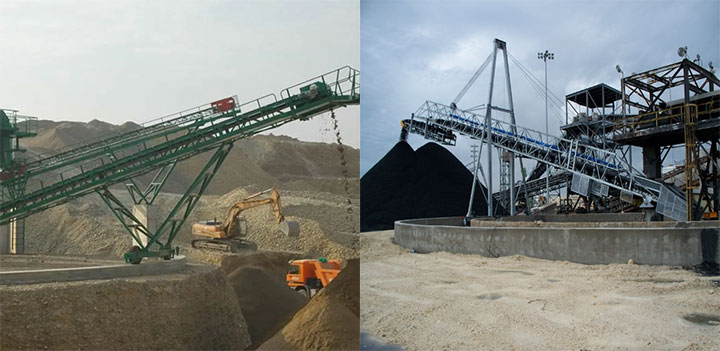
What are the components of a bulk material conveyor?
Taking the most common belt conveyor as an example, the core structure of a bulk material conveyor consists of the following basic components: a conveyor belt, serving as the traction and load-bearing member; a drive unit, typically consisting of a motor, a speed reducer, and a drive roller, providing system power; a tensioning device, maintaining sufficient belt tension; an idler assembly, including load-bearing sections and return rollers, supporting the conveyor belt and the material; and a frame, the overall supporting structure, all of which together enable continuous conveying of bulk materials.

How does a bulk material conveyor work?
A bulk material conveyor operates as follows: a drive unit rotates the drive roller, pulling the conveyor belt in a continuous loop through friction. Material evenly falls from the loading point at the rear of the conveyor onto the conveyor belt, moving along with it to the unloading point at the front of the conveyor. The material is unloaded by the unloading device, and then the empty conveyor belt is supported by the lower return rollers and returns to the loading point, repeating the cycle.
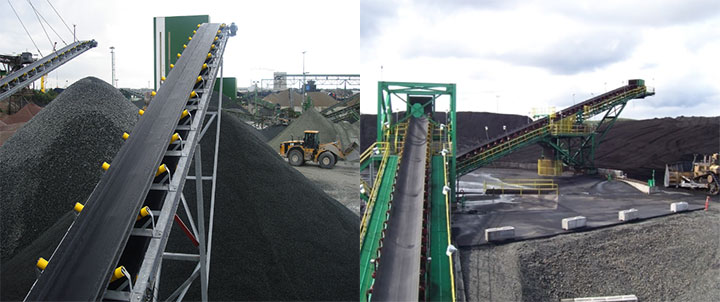
Bulk Material Conveyor Manufacturer
Our factory boasts sophisticated R&D capabilities and production processes, and our bulk material conveyors are renowned for their high reliability, long lifespan, and excellent cost-effectiveness. We can precisely design and manufacture our equipment based on the customer's specific material characteristics, site constraints, and process requirements, ensuring the perfect match for the production line. We also provide a professional installation and after-sales team to promptly resolve any operational issues and ensure smooth production.
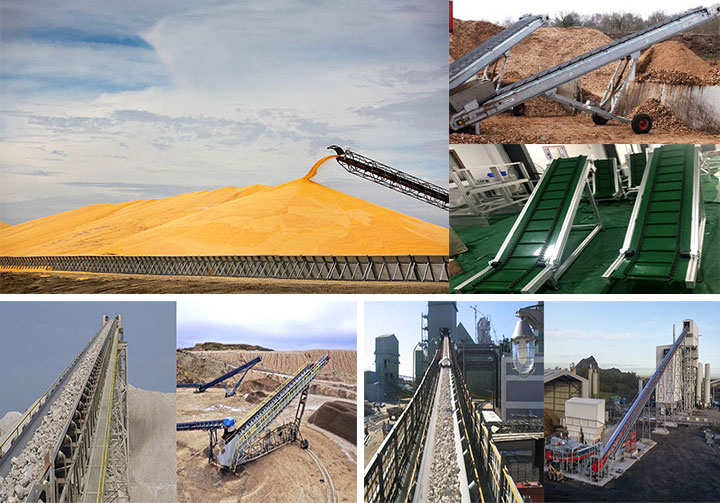
Bulk Material Conveyor System Display
